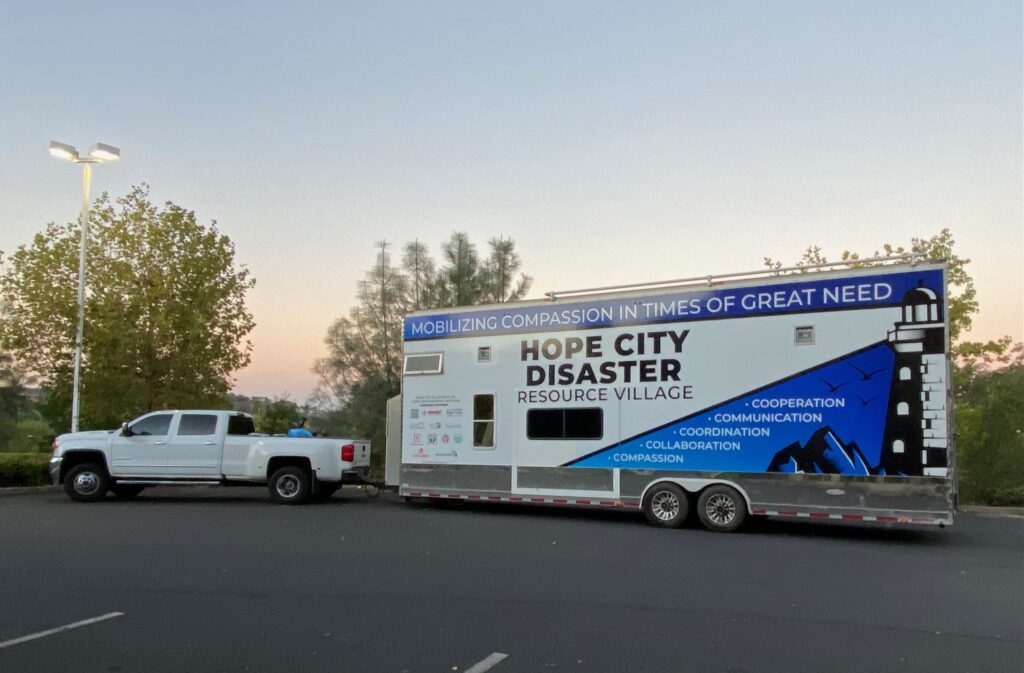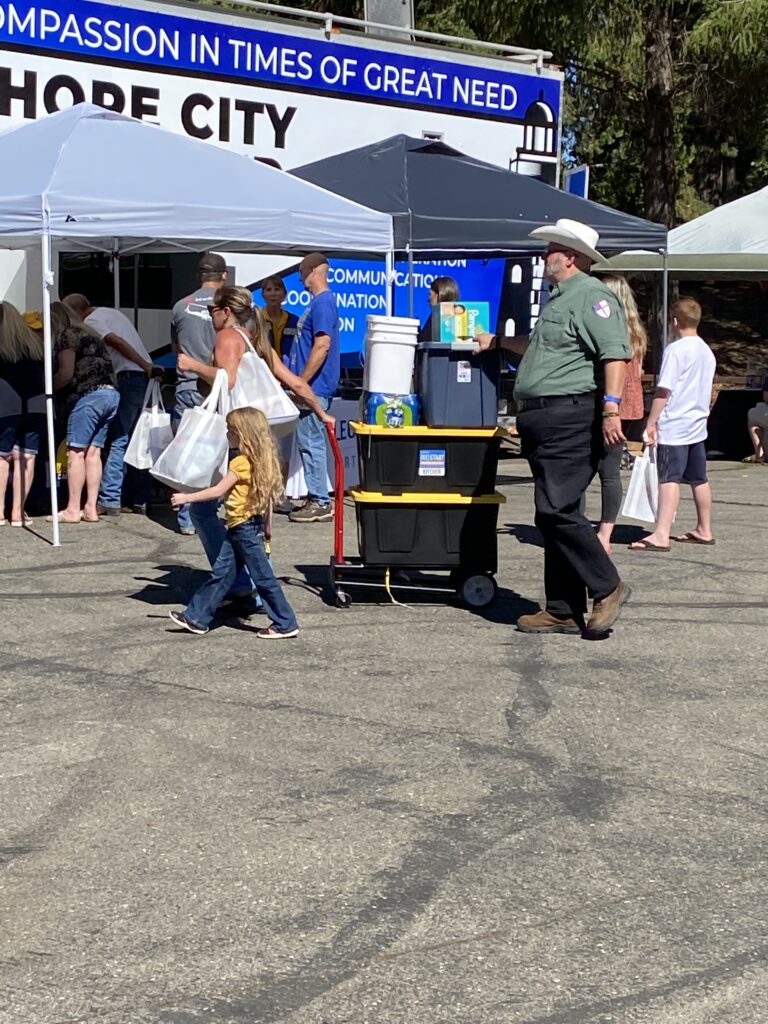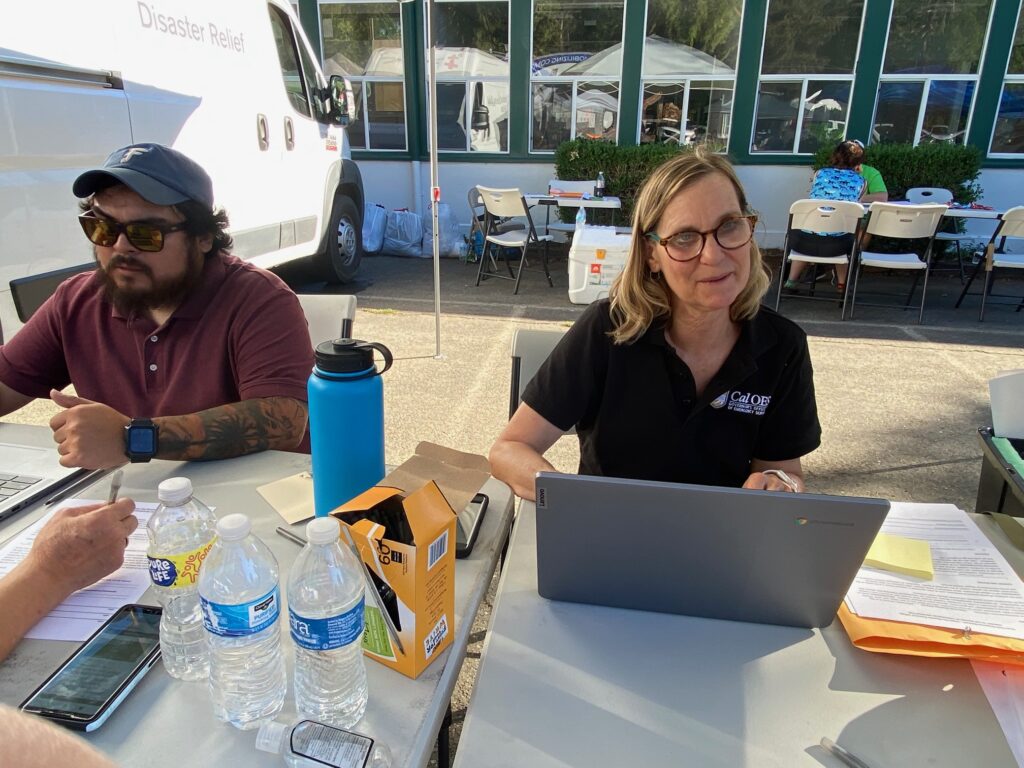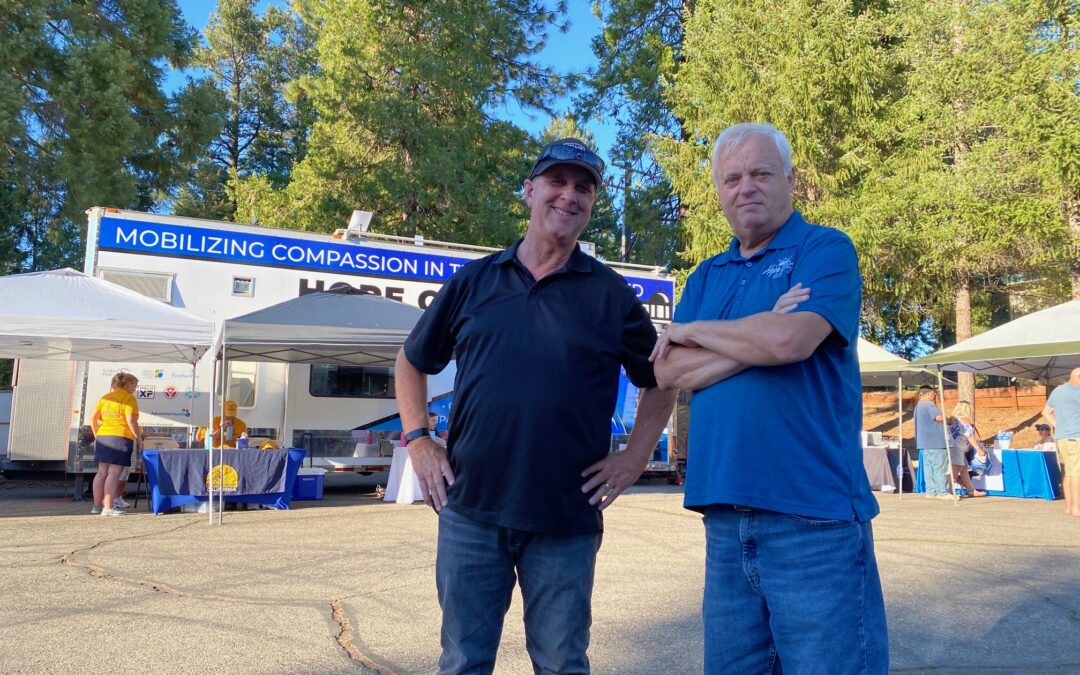For more than 20 years Hope Crisis Response Network has responded to disasters providing immediate response and then developing our long-term recovery projects by rebuilding homes for disaster survivors. HCRN has served in Northern California for the last seven years, responding to fires, rebuilding homes and helping individuals and communities recover. We’ve responded to more than 60 wildfires, rebuilt homes in six counties and handed out supplies to thousands of residents.
But we’re ready to change disaster response! The Hope City Disaster Resource Village is our answer to providing a better experience for the disaster survivor, while giving the service providers a better way to collaborate. We want to provide a way to help with short term losses – for instance food loss due to long term power outages and long-term recovery – families who lost their home in a fire. Both examples need help, but have very different needs.

The Command Center for the Hope City Disaster Resource Village made its first deployment on Monday, September 26 to provide supplies and resources to those affected by the Mosquito Fire. The Hope City DRV and 15 other agencies set up at the Foresthill Elementary School and served clients during a one-day response. Agencies had a variety of supplies: cleaning supplies, gift cards, food boxes, referrals for legal aid and veterans needs and chaplains are just some of the resources that were represented.
HCRN CEO Kevin Cox designed the DRV to improve client services and help agencies work together in a more collaborative manner to meet the needs following disaster. “The Disaster Resource Village brings together the non-profit organizations who provide things like cleaning supplies, gift cards, emotional support and other assistance into one location. The disaster survivor has an intake as they enter the Village and then all the partner agencies can connect with that same intake information. We eliminate the need for clients filling out applications with each and every provider.”

As part of coordinating the DRV, HCRN provides things like canopies, tables and chairs and even technology, with WIFI and tablets for the partners to use. Cox said, “This design allows our partners to do what they do best, meet immediate needs, but it provides oversight and collaboration so that the resources can work together.” For this deployment, when one organization ran out of gift cards, another organization began distributing gift cards. The Jumbotron provided news and information to those attending the Village.
Cal OES Volunteer Liaison Valeri Mihanovich helped with client intake for the deployment and said many clients were relieved to not have to repeat their name and address for each provider.

The Command Center provides office space for agency representatives, private meeting space and storage of the supplies including the tables and chairs.
This is the first phase of development for the Hope City Disaster Resource Village. Further developments will include prepared meals on site, a child area with trauma informed leaders, restrooms and showers.
The data collected on disaster survivors will be available to the long-term recovery group and will allow them to provide the necessary support to those who have lost their homes.

Recent Comments